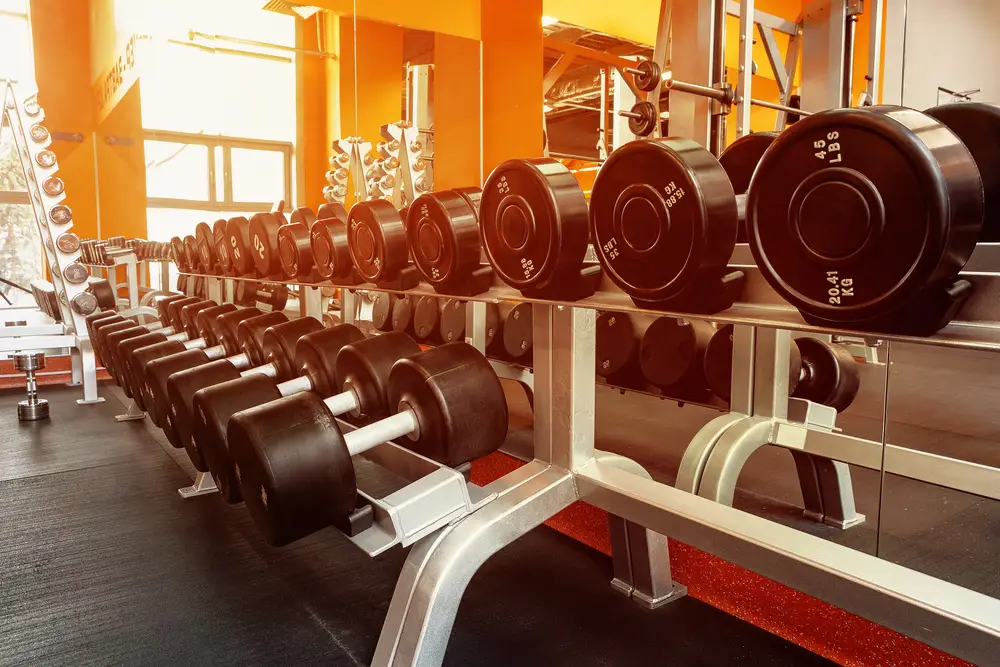In order to maintain bone density, post-menopausal women with the pre-osteoporosis condition known as osteopenia have a new challenge: making time for regularly scheduled, vigorous exercise. A new study recommends this group participate in high-impact exercises, including weight training, at least twice a week. The researchers who conducted the study found the results “disillusioning” because “older people generally have low enthusiasm for frequent exercise.”
According to the medical journal Bone, which published the results of the study, researchers in Germany tracked the bone density changes in 55 middle-aged women with osteopenia. The subjects participated in four exercise session per week which ran for 30 to 65 minutes. These sessions included a combination of bone-building exercises such as low and high-impact aerobics and resistance training with free weights and machines.
Bone density scans were taken at regular intervals of all participants including a control group of 43 and diet, medications, weight changes, depression and other factors which might affect this exercise regime were considered in the analysis. Of the group of regular, high-impact exercises, bone density decreased by 1.5 percent in the spine and 5.7 percent in the hip. Among the control group (which did little or no exercise), spine bone density declined by 5.8 percent and hip density declined by 9.7 percent. Researchers found this difference between the groups as significant.
What is Osteoporosis?
The spine experts at Texas Back Institute treat hundreds of patients suffering from osteoporosis every year and two internationally-recognized spine surgeons – Dr. Richard Guyer and Dr. Isador Lieberman – were asked for their opinions on the efficacy of using high-impact exercise to build bone density in older women.
First, an explanation of osteoporosis is in order.
 “Osteoporosis is a softening or dissolving of the bone,” said Dr. Lieberman.
“Osteoporosis is a softening or dissolving of the bone,” said Dr. Lieberman.
“At age 25, we have our peak bone density and as we get older, we begin to lose 1 percent or more of density each year,” added Dr. Guyer. “And in post-menopausal women, the rate of bone density loss accelerates to 2 to 3 percent each year for about five years. We all go through some degree of bone density loss with aging, but this is exacerbated by osteoporosis,” he said.
“You can think of this process as a brick which is dissolving,” Lieberman said. “At one time, it’s solid but over time the nooks and crannies of the brick begin to dissolve and eventually you are left with just a shell.
“The difference between genders has to do with hormonal imbalance. Frankly, we are outliving parts of our bodies. We can keep the heart and lungs functioning, but the skeletal framework – the bones and muscles – continue to deteriorate.
“We are seeing an epidemic of osteoporosis due to several environmental factors,” he noted, “One of the primary culprits is the cola soft drinks which have phosphates in their ingredients and this has the effect of ‘melting’ away bones.”
How High-Impact Exercise Builds Bone Density
 The researchers found a significant difference between the subjects who participated in regular, rigorous exercise and those didn’t. Why does high-impact exercise and weight training increase bone density?
The researchers found a significant difference between the subjects who participated in regular, rigorous exercise and those didn’t. Why does high-impact exercise and weight training increase bone density?
“There’s a medical term, called ‘Wolf’s Law’ which notes that bones which are under stress will increase in density,” noted Dr. Guyer. “Basically, the exercise causes the brain to signal the body to make more bone in order to deal with this stress. High-impact exercise and weight-lifting put pressure on the bones and the bone responds by getting stronger.”
“When astronauts go up in space and they are not subjected to gravity, their bones soften over time,” Dr. Lieberman said. “The same thing happens to the bones when there is no pressure put on them. The osteoporosis is accelerated. There is an electrical and a physiologic effect on bones when it is exposed to forces. In this case, this is exercise and weight training.
“Swimming, biking and other aerobic exercises are great, but they don’t cause the bone to grow denser in the manner of weight training and vigorous exercise such as running and jumping.”
Potential Dangers
Sometimes the “cure” for a physical malady such as osteoporosis will have unintended consequences which are more damaging than the condition itself. When older women undertake an aggressive program of high-impact exercise, they must take into consideration other conditions of their body which might lead to serious health issues.
“One of the problems of this approach is that as we get older, we lose some of our ability to balance,” noted Dr. Guyer. “This is the most common reason older people fall and break a hip or other bones and this is why yoga, Pilates and Tai Chi are so important for this age group. These stretching exercises build flexibility and balance.”
“This age group might also have arthritic joints,” added Dr. Lieberman. “This type of exercise would likely be painful and could injure someone with this condition.
“This age group might also have such severe osteoporosis that high-impact exercise could cause a fracture of these porous bones. So, it is very important to get a diagnosis of the level of osteoporosis and get advice on the type of exercise and weight-training program from an expert.
“It’s important to balance the stress of strenuous exercise with the other health factors affecting an older person,” he concluded.




